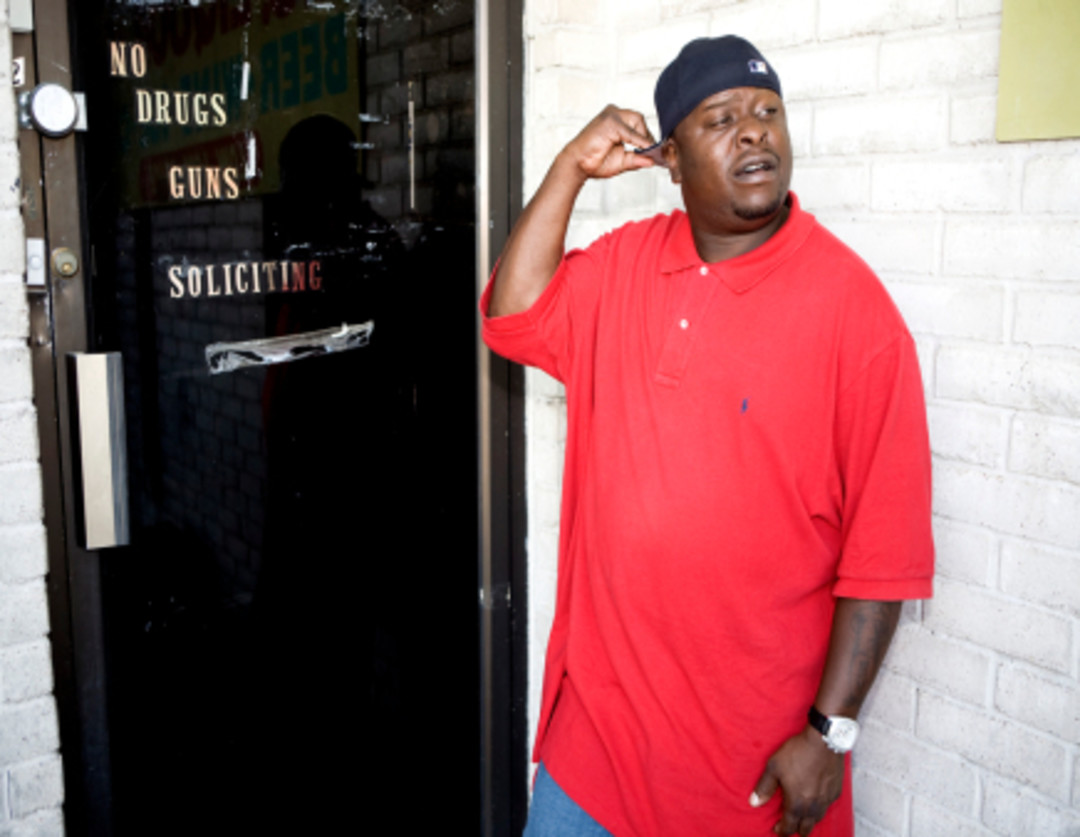Chopped and Screwed

Image: Peter Beste
On The Town: How did you first become interested in Houston rap?
Peter Beste: I grew up outside of Houston, and I had a voyeuristic interest in some of these ’90 acts like Geto Boys and Ganksta NIP. Then many, many years went by and I got into photography, and I began to think that it would be a great long-term documentary project. Many of those places in Houston are changing and becoming gentrified, and I wanted to document that era. I started contacting some of the artists in 2004. I would come down to Houston to visit family, and photograph K-Rino or Street Military or whoever else. So I started meeting people and becoming part of the community, and I would visit once or twice a year. And it’s been nine years now. It took years to find the right publisher and put it all together. I collaborated with this writer, Lance Scott Walker, who interviewed all the artists and people in the community. We pored over tens of thousands of photographs and hundreds of hours of interviews in putting together this 288-page book. It’s about 80 percent photos and 20 percent text, more or less.
OTT: You said you grew up outside of Houston. May I ask where?
PB: Let’s just keep it general—the north side of Houston.
OTT: Did you go see the Geto Boys and other groups when you were growing up?
PB: No, I wasn’t a huge rap fan as a kid. It was just like “wow, this stuff is really gritty and real.” Something about the lyrics and the pictures they painted in their lyrics. It really got my imagination going. I was out in the ‘burbs, I wasn’t in that scene. I didn’t meet any of [the rappers] until 2004. And I was very honest about my outsider-ness.
OTT: How did the rappers respond when you asked whether you could hang out with them?
PB: Some of them were really receptive. Some of them were skeptical, of course—seeing a white guy in the ’hood with a camera. There are a few rappers I became friendly with, and they would take me around and introduce me to people. I had a couple of close calls. One time Scarface kept me from getting my ass whipped by this crazy guy. The first time I met Ganksta NIP, he put me through this long, drawn-out ordeal of intimidation, with him circling me and showing me his gun. But for the most part it was a very smooth, organic process, getting to know them over the years.
OTT: What makes Houston rap distinctive from rap from other cities?
PB: It has a real original sound, for starters. Historically, the whole middle of the country didn’t get any respect, rap-wise—only New York and California. So I think a lot of the kids in Houston were just left to their own devices, to develop their own style, their own record labels and distribution networks. They became real entrepreneurs because they didn’t have the major label deals in the beginning. So there’s this kind of hustle ethic, which isn’t unique to Houston, but is very distinctive.
OTT: From your perspective as a photographer, what makes Houston rappers so interesting visually?
PB: A lot of aspects of the culture—the slabs [gaudily painted cars], the sip [cough syrup], the Dirty South imagery. There are so few chain stores in these neighborhoods, so all they have is these mom-and-pop places with hand-painted signs and a real community flavor. It was a really colorful environment with some really colorful characters.
OTT: Your work shows a side of Houston that many white people may not even know exists. What does that say about how racially divided the city is?
PB: It’s almost an off-the-grid lifestyle. At some of the after-hours joints there are no police in sight—you do what you want. Things are legal that wouldn’t be on the white side of town. That was a big challenge because I had a camera around all these illicit activities. So we had to be really selective with the editing and leave out a lot of good stuff. Some of the stuff was just a little too gnarly. Like the after-hours clubs that are also strip clubs. There’s no police, there’s just weed everywhere. I don’t really want to go any more into that—you’ll see in the book. We had to censor ourselves a little bit.
Peter Beste: Houston Rap
Thru May 3
Free
Houston Museum of African American Culture
4807 Caroline St
713-526-1015
hmaac.org
